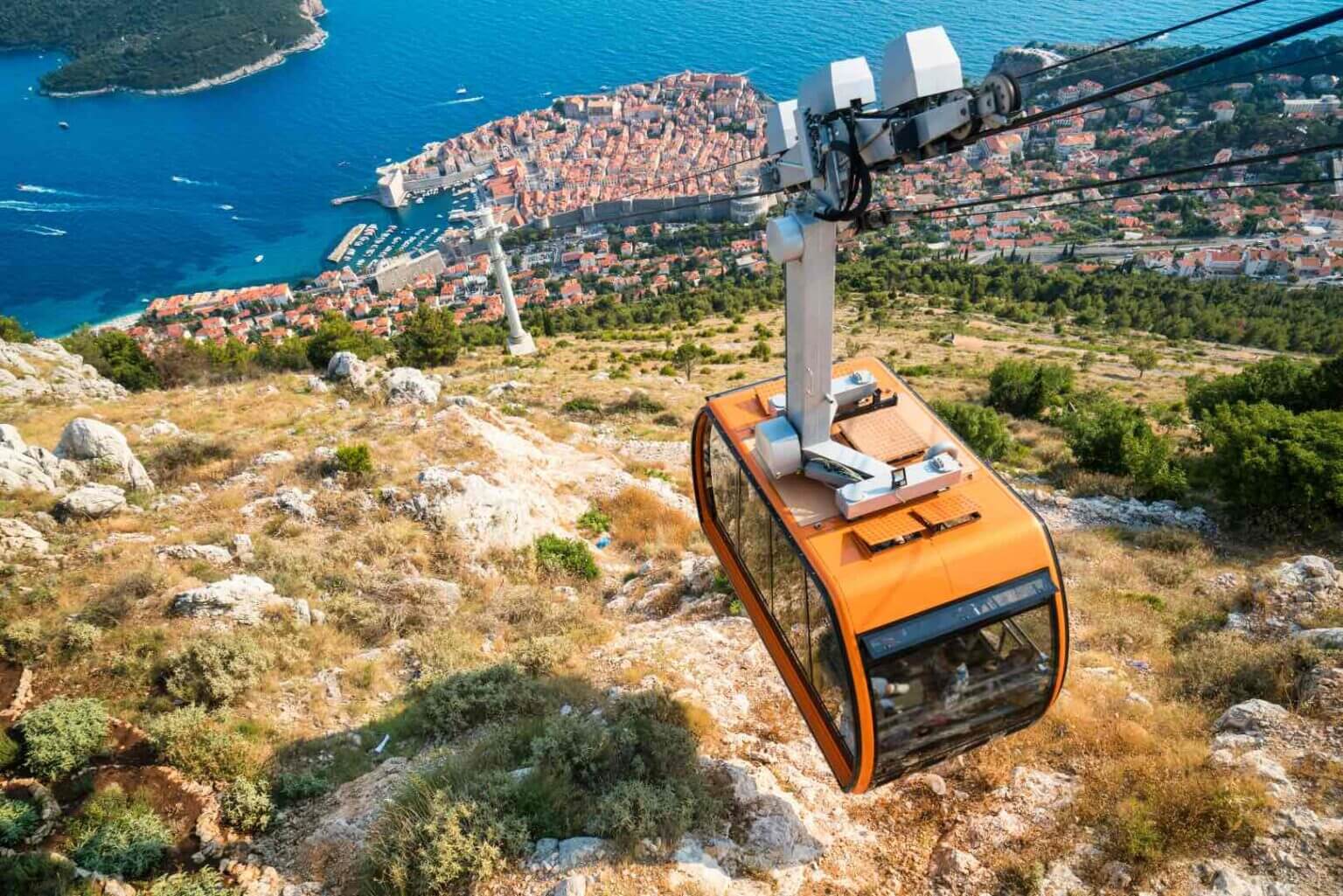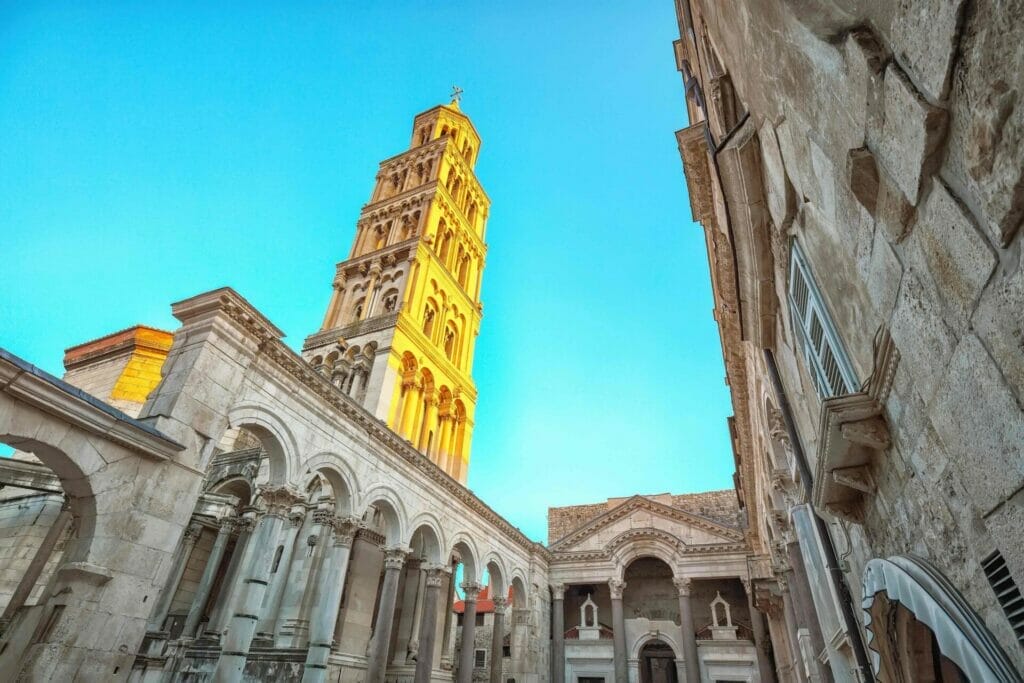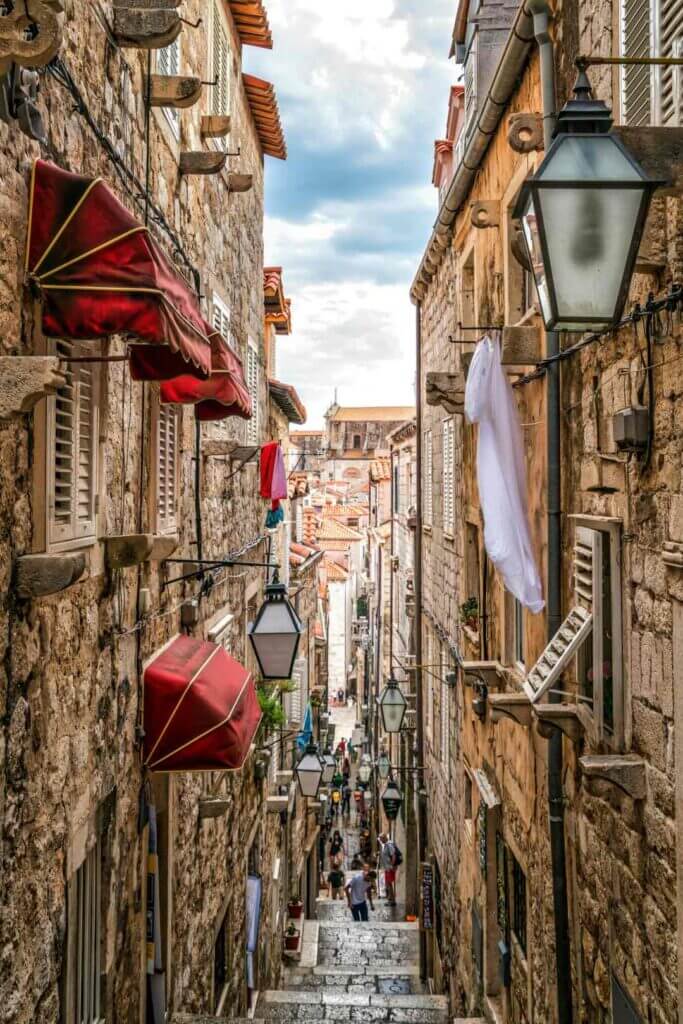Table of Contents
ToggleWhere am I? The warm embrace of the Adriatic Sea, sun-kissed piazzas bustling with life, and the aroma of freshly baked focaccia mingling with the salty air. Am I in Italy? Or maybe Croatia? Both countries share a deep-rooted connection, a legacy entwined by history and a vibrant Mediterranean spirit that whispers tales of ancient empires and modern-day adventures. If you love the charm of Italy, you’re bound to fall head over heels for Croatia, with its irresistible blend of familiar comforts and its own unique character. Let me show you the differences!

Key Takeaways
- History is Alive: Explore Roman amphitheaters and Venetian towns to witness centuries of interconnected history.
- Foodie Paradise: Indulge in shared Mediterranean delights, but don’t miss the unique Croatian specialties.
- Linguistic Bridges: Picking up a few Italian phrases will enhance your travels and make you feel like a local.
- Style Connection: Find inspiration in the fashion scenes, from elegant Italian chic to vibrant Croatian designs.
- Warmth of Shared Values: Experience the strong emphasis on family and the role of religion in both cultures.
Italian Influences: Architecture

Roman Ruins and Influence
From the moment I stepped foot in Split, I felt like I wandered into a time machine. The heart of the city beats within Diocletian’s Palace, a Roman emperor’s seaside escape that’s now a UNESCO World Heritage Site. Strolling through Pula, I marvelled at the remarkably preserved Roman amphitheater. Yet, these architectural wonders aren’t just relics of the past , they seamlessly blend into the fabric of Croatian cities, with cafes spilling into ancient courtyards and vibrant markets filling once-gladiatorial arenas.
Venetian-Inspired Coastal Towns
You will find when you’re on Croatia’s coastline it is a treasure trove of Venetian influence. Towns like Rovinj, with its pastel-coloured houses and cobbled streets climbing a hill topped by a Venetian bell tower, could make you forget you’re not in a postcard-perfect Italian fishing village. Wandering through Poreč, the Euphrasian Basilica, a Byzantine masterpiece adorned with glittering mosaics, echoes the grandeur of Venice itself.
After the article check out: Solo Travel in Croatia: Safe & Easy Exploration
Italian Influences: Food

Shared Mediterranean Staples
Who doesn’t love a Mediterranean diet!? When it comes to food, Croatia and Italy are kindred spirits. Think freshly caught seafood grilled to perfection, olive oil drizzled over everything, and pasta dishes that would make a nonna proud. Trust me, from the bustling markets of Zagreb to tiny konobas (traditional taverns) tucked away on islands, you’ll always find something to tempt your taste buds.
Regional Delights with an Italian Twist
Of course, each country has its own culinary stars. In Croatia, you’ll find hearty peka dishes (meat or seafood slow-cooked under a bell-shaped lid), truffle hunting in Istria, and the ubiquitous burek, a flaky pastry filled with savoury goodness. Yet, you’ll also notice subtle Italian influences, like creamy risottos and an undeniable love for gelato, and then, of course, there’s the eternal pizza vs. burek debate!
Related article: Croatia’s Top 10 Culinary Experiences: Eat Like a Local
FREE Travel Planner
Italian Influences: Language
Italian Words in Croatian
Even if you don’t speak Italian fluently, you’ll pick up on familiar words sprinkled throughout the Croatian language. From a casual “ciao” to ordering a “gusto” of your favourite gelato flavour, you’ll discover bits and pieces of Italy in everyday conversations. If you’re exploring coastal regions, you might even learn a few words of charming Venetian dialect!
Similarities in Dialects
Just like Italy, Croatia has a rich tapestry of regional dialects. The sing-songy lilt of a Dalmatian accent might remind you of the melodic flow of southern Italian speech. The coastal regions, historically connected through maritime trade, exhibit those linguistic similarities even more strongly.
Challenges for Non-Speakers
Let’s be honest, while Croatian and Italian share some overlap, they’re distinct languages. Don’t worry if you only know basic Italian; a few Croatian phrases, a smile, and a willingness to explore will take you far. After all, part of the joy of travel is overcoming those language barriers and connecting with the locals!
Greetings
- Hello: Bok (bohk)
- Good morning: Dobro jutro (doh-broh yoo-troh)
- Good day: Dobar dan (doh-bahr dahn)
- Good evening: Dobra večer (doh-brah veh-cher)
- Goodbye: Doviđenja (doh-vee-jen-yah)
Essentials
- Yes: Da (dah)
- No: Ne (neh)
- Please: Molim (moh-leem)
- Thank you: Hvala (hvah-lah)
- Excuse me/Sorry: Oprostite (oh-proh-stee-teh)
Related article: Croatia’s Top Historic Sites: A Journey Through Time
Subscribe to Northern Wanderers
Italian Influences: Fashion

Chic Italian Flair
Italians are known for their impeccable style, and that influence definitely spills over into Croatia. From fashionable boutiques in Zagreb to chic seaside promenades, you’ll notice a shared appreciation for elegant cuts, quality fabrics, and a touch of Mediterranean flair.
Croatian Design Scene
However, Croatia is far from just a fashion follower! The country has a burgeoning design scene with exciting local brands putting their own unique spin on contemporary trends. Keep an eye out for boutiques carrying Croatian labels, you might discover your new favourite outfit.
Shopping Destinations
Whether you’re seeking high-end Italian brands or unique Croatian creations, both countries offer excellent shopping experiences. In Croatia, head to the stylish streets of Zagreb or Dubrovnik for a mix of international and local stores.
Italian Influences: Culture and Traditions

Family Values
At the heart of both Italian and Croatian societies lies a deep respect for family. Meals are occasions for gatherings, with tables laden with food and conversation. You often see multiple generations living in close proximity, with grandparents playing a vital role in their grandchildren’s lives. To me, this shared emphasis on family values is one of the most endearing connections between the two cultures. While in Split I witnessed a whole family just singing in the street, incredible!
Importance of Religion
Both Italy and Croatia are predominantly Catholic countries, and that shared faith has shaped their traditions and values. You’ll find beautiful churches dotting the landscape, while religious festivals play an important role in the cultural calendar. From local saint’s day celebrations to grand Easter processions, witnessing these events is a fascinating way to delve deeper into the soul of each country.
Related articles: Croatia’s Islands: Top 10 Must-Visit
Croatia's Influence on Italy

While the spotlight often shines on Italy’s influence across the Adriatic, Croatia’s contributions to its neighbour’s history and culture are worth highlighting. This reciprocal exchange underscores the interconnectedness of these two vibrant Mediterranean nations.
Historical Figures
Juraj Dalmatinac (Giorgio da Sebenico): Born in Zadar (then under Venetian rule), this prominent 15th-century architect and sculptor left his mark on Italy. His work is celebrated in towns like Šibenik, Ancona, and Venice, where he contributed to the iconic St. Mark’s Basilica.
Molise Croats: A small yet vibrant community of ethnic Croats (known as Molise Croats) has resided in Italy’s Molise region since the 15th century. They escaped Ottoman invasions and continue to preserve their distinct language, a variation of Croatian, and unique cultural traditions.
Culinary Contributions
Dalmatian Specialties: As with all border regions, culinary influences have flowed both ways. Dishes from Croatia’s Dalmatian coast have found their way onto Italian menus. Look out for variations of pašticada (beef stew) or seafood brodetto, examples of this shared culinary heritage.
Cravat Origins: Believe it or not, the ubiquitous necktie traces its roots back to Croatian mercenaries! During the Thirty Years’ War in the 17th century, Croatian soldiers wore traditional knotted neckerchiefs that caught the eye of the fashion-conscious French. This led to the adoption of the ‘cravat,’ an accessory that eventually evolved into the modern tie.
Cultural Exchange
Shared Catholic Heritage: The strong Catholic traditions in both nations have created ongoing religious and cultural bonds. Croatian pilgrims often visit significant religious sites in Italy, and there’s a continuous exchange of ideas and practices within the faith community.
Student and Worker Exchange: Italy remains a popular destination for Croatian students and workers. This exchange brings fresh perspectives, linguistic connections (some universities offer Croatian language courses), and strengthens economic ties between the countries.
Related article: 8 amazing ways to experience Italy this year
Guided Tours
Final Thoughts
For me, the Italian influence in Croatia adds another layer of richness to an already captivating country. It’s like finding hidden treasures within a beautiful landscape. I hope this article has given you a taste of this unique cultural blend and inspires you to plan your own adventure through Croatia. You cannot fail to love it!
Have you experienced the Italian influence in Croatia, or perhaps spotted the Croatian influence in Italy? Share your stories, tips, and favourite hidden gems in the comments below!
Related articles: 5 Reasons Why Croatia Is One Of Europe’s Most Desirable Destinations Right Now
Recommended websites and sources:
Frequently Asked Questions (FAQs)
Are there any unique Croatian festivals that showcase Italian influence?
In the coastal town of Rovinj, the annual “Rovinj Night” (or “Notte Italiana”) celebrates the town’s historical connection to Italy with Italian music, food, and cultural events.
How do Croatians feel about Italian influence on their culture?
Croatians have a complex relationship with their Italian neighbours. There’s a mix of appreciation for shared history, some lingering tensions from past conflicts, and a strong desire to maintain a unique Croatian identity.
What are some typical dishes that show Italian influence in Croatian cuisine?
Think pasta dishes like fuži and njoki, variations on the Italian gnocchi, and the prevalence of delicious risotto.
Is it easier to travel in Croatia or Italy?
Both Croatia and Italy offer developed tourist infrastructures. Croatia may be perceived as slightly more budget-friendly,while Italy generally has a wider network of transportation options. Ultimately, the “easier” destination depends on your travel style and preferences.
Do Italian and Croatian people generally get along?
Like any neighbouring countries, Italy and Croatia have a complex history with both cooperation and periods of tension.Today, most Italians and Croatians enjoy friendly relations centered around tourism, trade, and cultural exchange.
Croatia Travel Guides
Save this post (pin it)
Share this post
Related Articles
Note: This post contains affiliate links. When you make a purchase using one of these affiliate links, we get paid a small commission at no extra cost to you.

